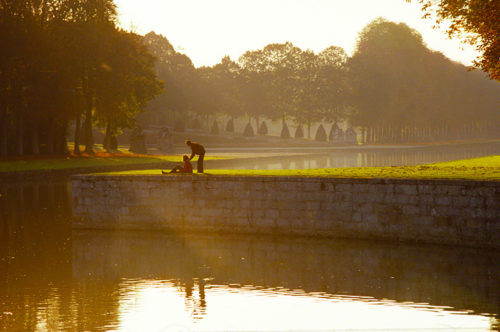I recently had a student taking my online class with the BPSOP submit a picture that was obviously shot under an overcast sky with no directional light. In other words no light except the gray ambient kind.
Thinking back, I also remember people taking my “Stretching Your Frame of Mind” workshops talking about shooting in the Golden Hour, but not completely understanding exactly what it meant.
In the case of the BPSOP student, she told me in her written explanation of the submitted shot that she had taken it in the Golden Hour. For her to say that, to me, was a signal ( a cry for help) that she was expressing more of a romantic expression…and then and there I had to explain to her exactly what shooting during that time actually meant.
She may well have shot this during the last hour of the day, but that’s only half of the concept. The other half is obviously the quality of the light.
Golden Hour is usually just that. The first hour after sunrise and the last hour before sunset. I say “usually” because the time will vary depending on where you are in relation to the equator, and the time of year.
I say time of year because in the summer months the sun gets high and hot very fast and as far as I’m concerned Golden Hour is more like thirty minutes of quality light.
In the winter months the sun doesn’t get up as high and not nearly as strong, so you have a little more time when the light is right…at least for me.
When the sun is this low (either at sunrise or sunset) it will travel through more atmosphere, the angle the light travels to the Earth is longer, and there’s more water vapor that scatters the rays of the sun. This in turn warms the different hues (colors), minimizes contrast, elongates and renders the shadows light, and also keeps the highlights from becoming too overexposed.
Another way to determine Golden hour is to calculate the degrees the Sun is off the horizon. I’ve found that fifteen to twenty degrees fits into the time frame when the sun is low and warm; and what I consider the Golden Hour.
After explaining this to her she quickly picked up on the fact that shooting in the Golden hour is actually a practical phrase.
Having said all this, there are certainly times when shooting in the Golden Hour is both a romantic expression and a practical phrase, as in the photo taken above.
By the way, have you ever noticed that sunsets are usually more colorful? Want to know why? The reason the sky can be more dramatic is because of dust, debris and pollution that’s had time to build up during the day. You and I help with both!!! Just people walking around causes the dust and debris to rise into the atmosphere.
Visit my website at: www.joebaraban.com, and check out my workshop schedule at the top of this blog. Come shoot with me some time. This coming January Along with William Yu, I’ll be taking a group to China to photograph the flooded rice terraces and also the tribal villages. Next February in conjunction with the Santa Fe Workshops, I’ll be returning to Cuba for the fourth time. My next springtime workshop will Berlin next May; an incredibly beautiful city.
If you send me a photo with a question to: AskjoeB@gmail.com, I’ll create a video critique for you.
JoeB





